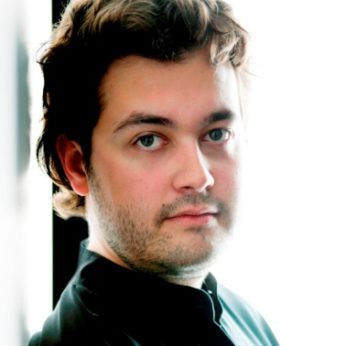Composer: Johannes Brahms (b. 1833 - d. 1897)
Performance date: 01/07/2012
Venue: Bantry Library
Composition Year: 1890
Duration: 00:30:02
Recording Engineer: Anton Timoney, RTÉ lyric fm
Instrumentation: vn, pf
Instrumentation Category:String Quintet
Artists:
Lawrence Power -
[viola]
RTÉ Vanbrugh Quartet (Gregory Ellis, Keith Pascoe [violins], Simon Aspell [viola], Christopher Marwood [cello]) -
[quartet]

Vienna’s Prater was, in the nineteenth century, a four-mile long wooded park dotted with cafés and beer gardens and restaurants. Brahms, like Beethoven and Schubert before him, relaxed there and listened to music from the little orchestras and the gypsy bands. Brahms’ apartment was within ten paces of the Prater, where he over the years became a well-known figure. Max Kalbeck, who was a member of Brahms’ inner circle from 1880, and later his first biographer, exclaimed on first hearing the opening of this magisterial quintet: ‘Brahms in the Prater!’ Brahms replied: ‘You’ve got it,’ and added with a roguish grin: ‘And all the pretty girls there!’ It is likely that Brahms was pulling his leg, but the idea is a good one.
The opus number is significant for it is the same number as Beethoven’s final piano sonata. Brahms had spent most of his life fighting Beethoven’s giant shadow; now suddenly he was tired, and Opus 111 seemed a significant milestone. The proposal for a quintet came from Joachim, who requested a companion for Op.88, though it was actually premiered by the Rosé Quartet, who were also to premiere quartets by Schönberg, Pfitzner, Reger and Weigl. As soon as Joachim saw the opening bars he told Brahms it would take three cellists in one to make the line heard above the thunderous accompaniment. Joachim was right, of course, and Brahms actually sketched a less massive alternative, but in the end he let the opening stand and bequeathed discomfort to cellists forever.
Brahms strolling in the Prater would appear to call for music every bit as grandiose as Musorgsky’s description of himself at Hartman’s memorial exhibition nearly twenty years earlier; both composers were aware of their significance. The opening of the quintet is truly superb as the cello melody strides out beneath the symphonic grandeur of the tremolo in the upper strings. Unlike the first quintet, there is no transition theme before the lyrical and waltz-like second subject is reached. However the tremolandi from the first subject begin to invade before the end of the exposition, which is repeated as usual. The start of the development is mesmerising, as pianissimo whisperings – derived from the movement’s opening tremolo – are mingled with wisps of the second subject. The remainder of this section makes much of the full-blooded opening, and the recapitulation is reached without a break in the tension. The coda looks seriously at the possibility of a gentle conclusion, but in the end Brahms cannot resist a final flourish.
The dark beauty of the adagio is a complete contrast, dominated as it is by the husky voice of the viola sighing over a hushed and ambiguous harmonic background, with plaintive pizzicatos to maintain momentum. Brahms is surely echoing the exotic gypsy bands that haunted the Prater with their night music for violin, cimbalom and bass. The central outburst is heralded by a mysterious sequence that almost fades into silence before the passionate climax. This culminates in a cadenza for the first viola, unknowingly anticipating a similar moment in the clarinet quintet.
The third movement is equally restrained, as though Brahms is creating an introspective counterweight for the extrovert outer movements. It is a reflective dance in G minor led by the first violin, leading into a graceful G major dance for the trio. The overwhelming impression of the finale is the dizzy abandon of the coda, but the build-up is achieved with Brahms’ usual subtlety. The first subject contrasts a scampering semiquaver idea with a more boisterous foot-stamping dance. These make way for a brief second subject of violin solo against a shimmering background with offbeat pizzicatos. The development and most of the recapitulation is driven by the energetic semiquavers as the working out becomes more brilliant. The reappearance of the second subject allows the momentum briefly to slacken before the hectic coda takes over.
Copyright © 2024 West Cork Music. All rights reserved.
Designed and developed by Matrix Internet